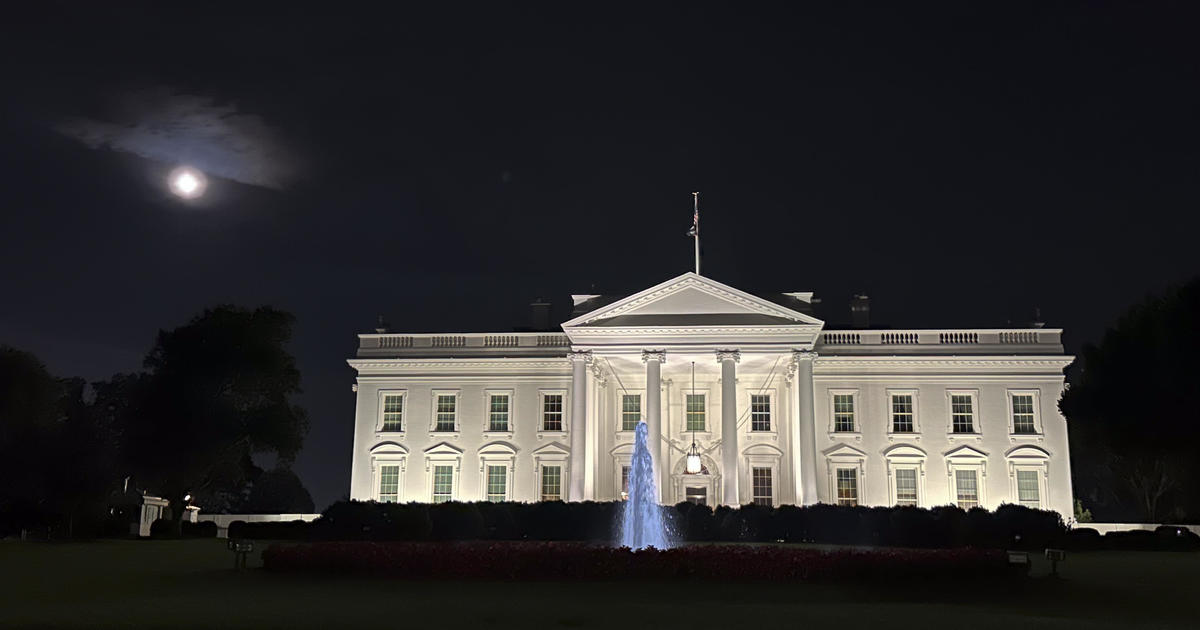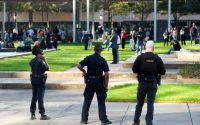Red-Crowned Parrots Are Beloved in L.A. County. Who’s Trapping Them?
For decades, the residents of Temple City, Calif., had learned to love their shrill avian neighbors — expecting to be woken by a cacophony of squawks, and anticipating their return at dusk to roost in the trees.
So it came as a shock last month when residents began to find some of the beloved red-crowned parrots dead, entangled in traps. Others found their feathers scattered along the road.
“I was just horrified,” said Norma Gonzalez, 53, a Temple City resident, noting that the birds — a nonnative species whose population exploded around the 1970s and 80s, possibly after pet parrots were released or escaped — became emblematic of the city, about 15 miles northeast of downtown Los Angeles.
“How can somebody do this?” she said.
The mystery deepened on Oct. 27, when a video shared to TikTok appeared to show a man with a ponytail yanking a net containing a handful of screeching parrots from a tree in eastern Temple City, before hopping over a brick fence into a parking lot and getting into a white Ford sedan — birds in hand.
Ceidy Cordova, 44, said that she uploaded the footage after her husband caught the man on camera a day earlier. “It just broke my heart,” said Ms. Cordova, noting that she had reached out to Temple City officials and the San Gabriel Valley Humane Society to alert them.
“They’re always there,” she said of the parrots, adding that her children would often open the windows at home to listen to their call. “Instead of hearing sirens or cars, it’s nice to hear our birds.”
Detective Sgt. Richard Lewis of the Los Angeles County Sheriff’s Department in Temple City said that he first became aware of the parrot deaths late last month. Deputies found nets in the trees along Rosemead Boulevard, just north of Las Tunas Drive, and informed city officials, who removed them.
Under questioning by sheriff’s deputies, the man in the TikTok video denied that he had put up the nets, Sergeant Lewis said. He said that the man told the authorities that he “saw a bird in the middle of the street; saw that the bird was alive; he picked it up, took it home, and as he was unwrapping the netting from the bird, the bird flew away.”
The man, who is not a resident of Temple City but lives nearby, told deputies he had also seen a dead parrot entangled in a net on a previous occasion and “disposed of the bird.” The authorities have not received any other information about who might have set the nets, Sergeant Lewis said. “We have no idea.”
Temple City said it was working with the sheriff’s department to investigate the matter, and that members of the public should come forward if they have information about who had set the traps.
The parrots, which are native to the forests of northeastern Mexico, are considered endangered by the International Union for Conservation of Nature because of hunting, trapping and habitat loss. But in some U.S. cities, populations of the birds are booming, said Simon Kiacz, an avian ecologist at Texas A&M University who has studied why the parrots do so well in urban environments.
“What the parrots want is what the people want,” he said, referring to the palms, year-round fruiting trees, and nut and berry-yielding plants that are found in the birds’ favorite neighborhoods in Florida, South Texas and California. “We’ve created these little habitats, or these little oases,” Dr. Kiacz said, noting that there are approximately 3,000 red-crowned Parrots in Los Angeles County.
The parrots are protected under a California state code that prohibits the capturing of birds and mammals, but Dr. Kiacz said it is not uncommon to find chicks that had been poached in the United States being sold at flea markets. Online listings advertise red-crowned Parrots for hundreds of dollars or more.
“They don’t make good pets,” Dr. Kiacz said, noting that the animals can live for up to 40 years and have the mental capacity of a child about six months to 1 year old. Despite misconceptions, they cannot talk well like other parrots, and they have a propensity to shriek. “They’re a big pain,” he said. “I think a lot of people get them and realize, ‘Oh, this was a mistake.’”
Some Temple City residents said they were frustrated by the response from the authorities, and believed the parrots should be better protected. But the birds have not always been universally beloved in their adopted home.
“These wild green parrots in Temple City have gotten out of control, and something needs to be done,” one resident bemoaned in a 2017 letter published in The San Gabriel Valley Tribune. “Twice a day, they flock to the telephone poles and trees like locusts, and it sounds like nails on a chalkboard for at least an hour each time,” she wrote. “Who will save us?”
Ms. Gonzalez, who noticed the birds’ feathers strewn near her house, said that though the birds were noisy, she loved them. “They’re just magnificent little beasts,” she said.


